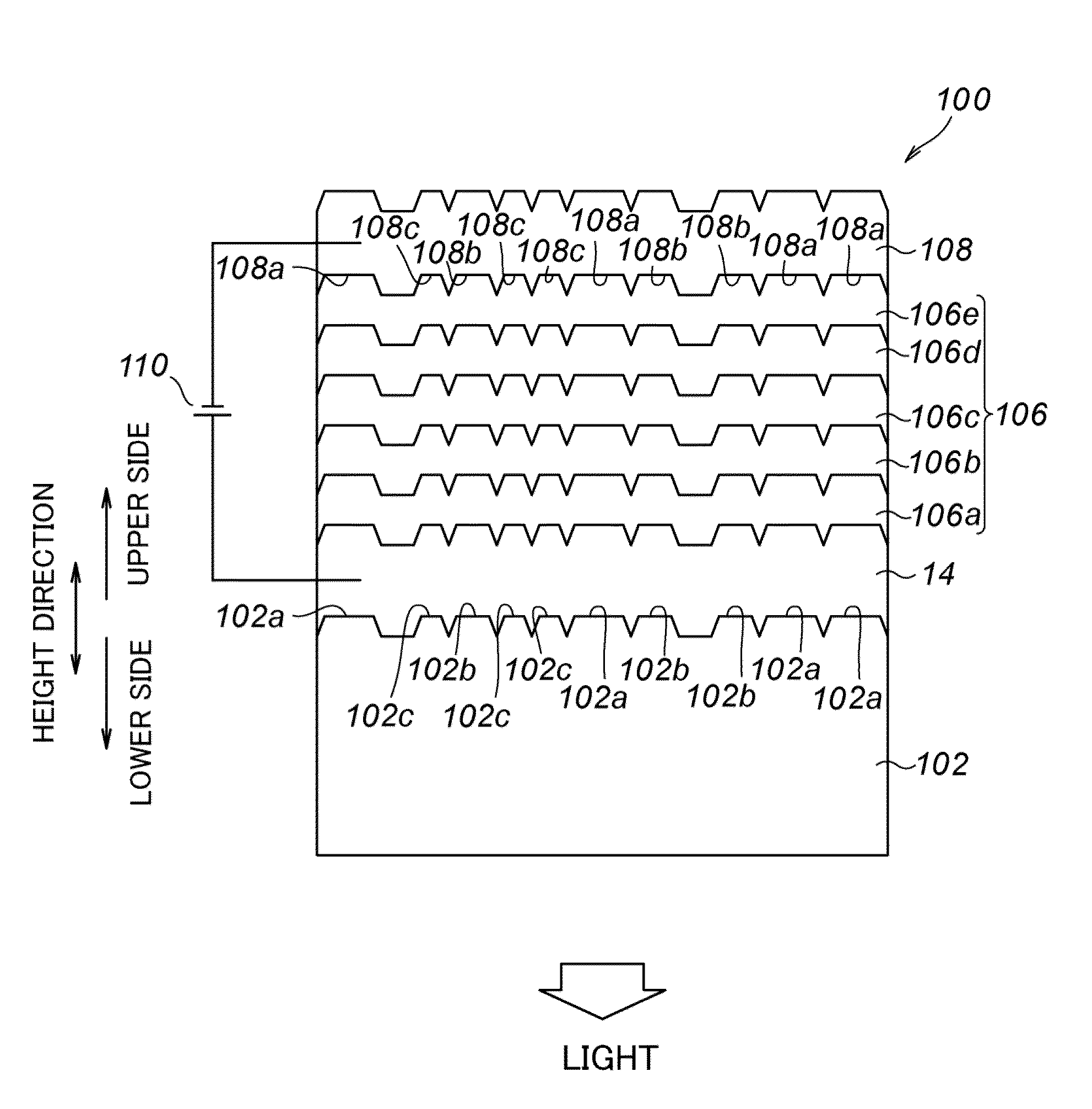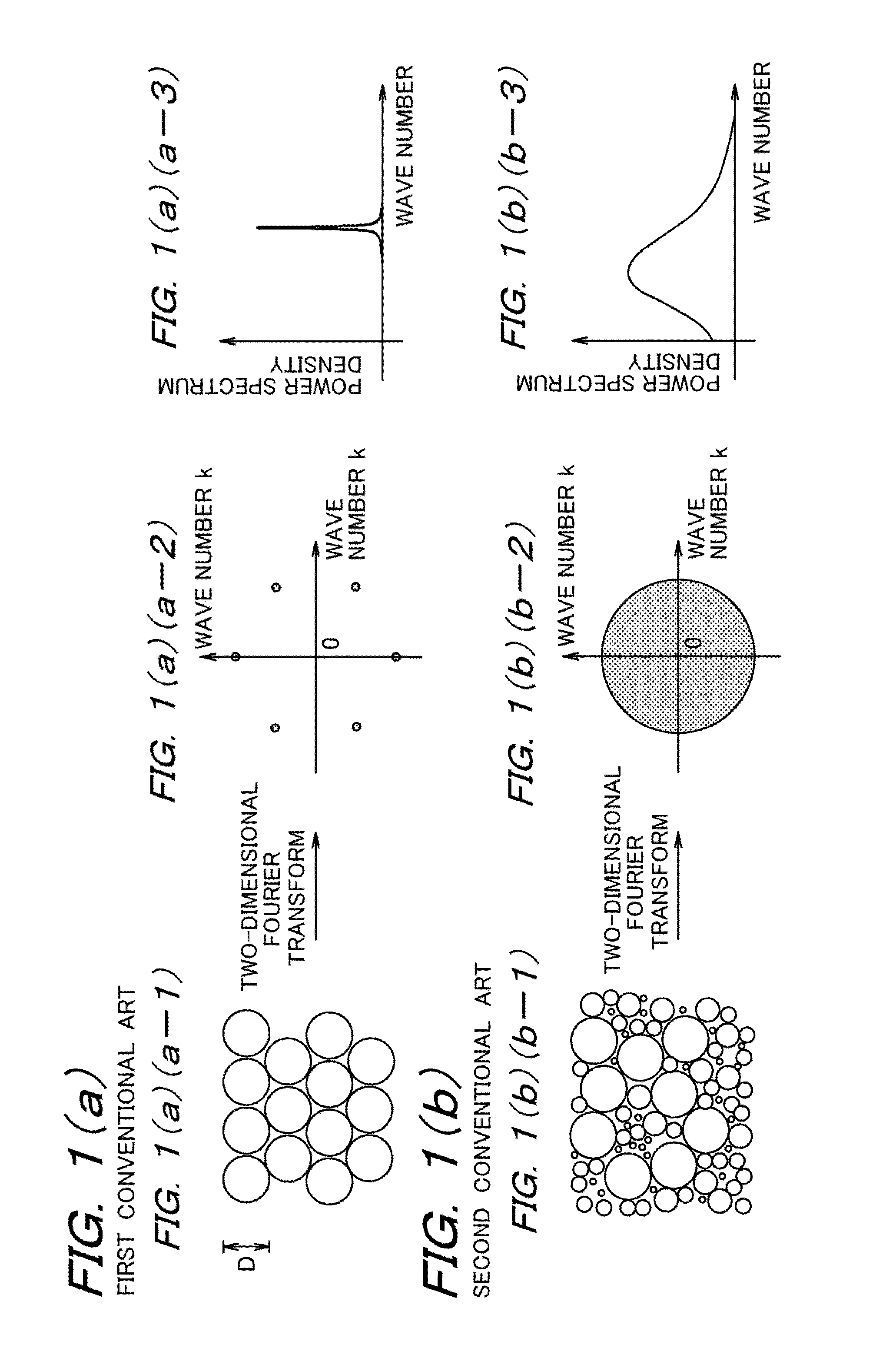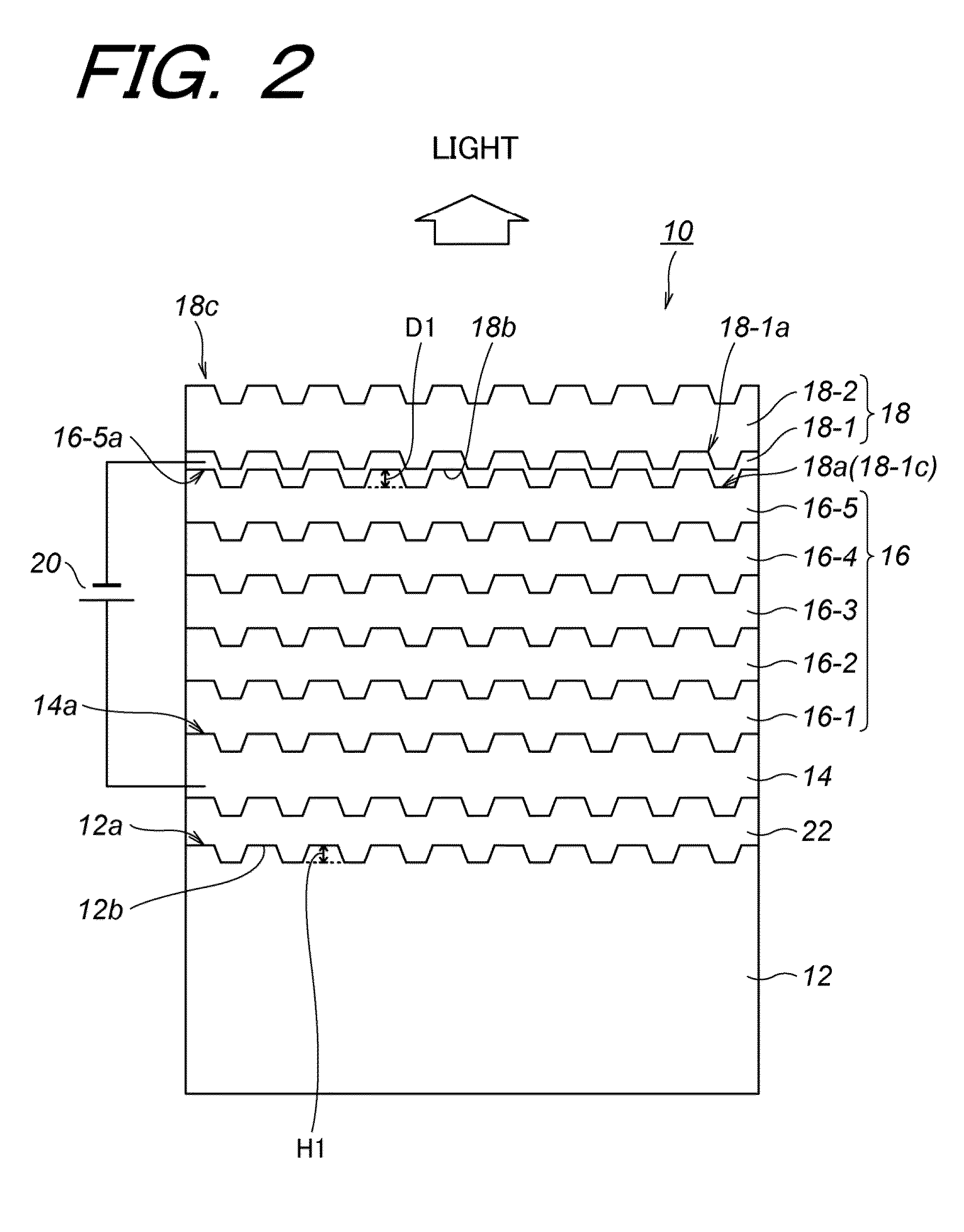Organic light emitting diode, manufacturing method for organic light emitting diode, image display device, and illumination device
a light emitting diode and manufacturing method technology, applied in the direction of solid-state devices, semiconductor devices, thermoelectric devices, etc., can solve the problems of low light extraction efficiency, and relationship between, and achieve excellent effect and high light extraction efficiency
- Summary
- Abstract
- Description
- Claims
- Application Information
AI Technical Summary
Benefits of technology
Problems solved by technology
Method used
Image
Examples
first embodiment
(1) First Embodiment
[0094]Hereinafter, referring to the accompanying drawings, the organic light emitting diode by the first embodiment of the present invention will be explained in detail.
[0095]Now in the explanation below, as long as the present invention is used, a structure and a method of a target organic light emitting diode are not necessarily limited.
(1-1) Constitution of the Organic Light Emitting Diode by the First Embodiment
[0096]Herein, FIG. 2 shows a schematic constitution explanatory view showing the organic light emitting diode by the first embodiment of the present invention.
[0097]The organic light emitting diode 10 shown in FIG. 2 is a monochromatic organic light emitting diode of a type generally referred to as a top emission-type with a cathode at the top, and a reflective layer 22, an anode conductive layer 14, an organic EL layer 16, and a cathode conductive layer 18 are sequentially stacked on a substrate 12.
[0098]Then, the diode is designed that voltage can be...
second embodiment
(2) Second Embodiment
[0320]Hereinafter, referring to the accompanying drawings, an example of a second embodiment of the organic light emitting diode according to the present invention will be explained in detail.
[0321]Now in this embodiment as well, as long as the present invention is used, a structure and a method of a target organic light emitting diode are not necessarily limited in the explanation below.
(2-1) Constitution of the Organic Light Emitting Diode by the Second Embodiment
[0322]Firstly, FIG. 8 shows a schematic constitution cross-sectional explanatory view showing the second embodiment of the organic light emitting diode according to the present invention.
[0323]Now, in the explanation regarding the organic light emitting diode 100 according to the present invention shown in FIG. 8, for convenience of explanation, a surface on an upper side in a height direction of each layer constituting the monochromatic organic light emitting diode 100 is appropriately referred to as...
PUM
 Login to View More
Login to View More Abstract
Description
Claims
Application Information
 Login to View More
Login to View More - R&D
- Intellectual Property
- Life Sciences
- Materials
- Tech Scout
- Unparalleled Data Quality
- Higher Quality Content
- 60% Fewer Hallucinations
Browse by: Latest US Patents, China's latest patents, Technical Efficacy Thesaurus, Application Domain, Technology Topic, Popular Technical Reports.
© 2025 PatSnap. All rights reserved.Legal|Privacy policy|Modern Slavery Act Transparency Statement|Sitemap|About US| Contact US: help@patsnap.com



